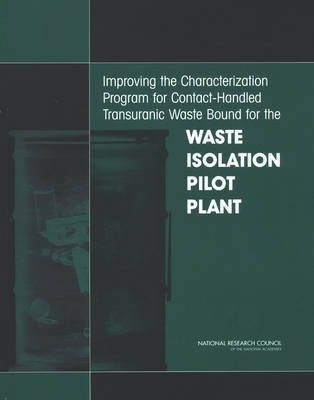Improving the Characterization Program for Contact-Handled Transuranic Waste Bound for the Waste Isolation Pilot Plant(English, Paperback, National Research Council)
Quick Overview
Product Price Comparison
As operational experience is gained in the disposal of transuranic waste from nuclearweapons facilities at the Waste Isolation Pilot Plant in New Mexico, the Departmentof Energy (DOE) has opportunities to change how it "characterizes" waste to confirmthat it is appropriate for shipment to and disposal at the underground repository.The waste shipped to the facility includes gloves, rags, tools, and other debris ordried sludge that has been contaminated by radioactive elements, including plutonium,during production or cleanup activities in the DOE weapons complex. However,before the DOE seeks regulatory approval for changes to its characterization program,the agency should conduct and publish a systematic and quantitative assessmentto show that the proposed changes would not affect the protection of workers,the public, or the environment, according to the committee. The assessmentshould take into account technical factors, societal and regulatory impacts, and thetime and effort required to make the changes.Table of Contents Front Matter Executive Summary 1 Introduction 2 Transuranic Waste Inventories 3 Regulatory and Policy Framework for Waste Characterization 4 Transuranic Waste Characterization Program 5 A Framework for Evaluating Waste Characterization Activities 6 Findings and Recommendations References A Biographical Sketches of Committee Members B Information-Gathering Meetings C Characterization-Related Requirements in WIPP Regulatory Documents D Transportation Package Requirements Affecting Waste Characterization E Health and Safety Issues in Waste Characterization F Risk Considerations Glossary Acronyms


